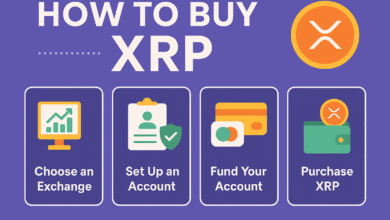How to Scale Crypto Exchange Business: Strategies for Sustainable Growth and Expansion
Master the art of scaling your cryptocurrency exchange with effective strategies for infrastructure, liquidity, security, and user acquisition

Introduction
The cryptocurrency exchange business has grown exponentially in recent years. As more individuals and institutions engage in cryptocurrency trading, the demand for secure, efficient, and scalable exchanges has skyrocketed. If you’re looking to scale your crypto exchange business, it’s essential to implement the right strategies across infrastructure, liquidity, user acquisition, and market expansion. This article will provide insights into the steps you can take to scale your cryptocurrency exchange effectively.
1. Understanding the Need for Scalability in Crypto Exchanges
Scaling a cryptocurrency exchange business is more than just increasing the number of users or transactions. It’s about creating a robust platform that can handle growth without compromising on security, performance, or user experience. With the increasing number of crypto traders, exchanges must scale quickly and efficiently to remain competitive.
What Does Scaling a Crypto Exchange Entail?
Scaling your crypto exchange involves:
-
Improving infrastructure to handle more trades per second.
-
Increasing liquidity to provide better prices for users.
-
Expanding services and offering new cryptocurrencies and features.
-
Ensuring security and compliance to protect users and meet regulatory standards.
2. Building the Right Infrastructure for Scalability
The foundation of a scalable crypto exchange is its infrastructure. Without a solid infrastructure, your platform will struggle to meet the growing demands of users.
Improving Crypto Exchange Infrastructure
To scale effectively, your exchange must be built on a scalable infrastructure. Here are some key strategies:
-
Cloud-Based Solutions: Use cloud services to dynamically scale resources based on demand. This ensures you can handle traffic spikes without compromising performance.
-
Decentralized Technologies: Consider utilizing decentralized infrastructure to spread the load across multiple nodes, ensuring that your platform remains responsive even during peak trading hours.
-
High-Performance Databases: Implement high-performance, scalable databases like NoSQL or distributed SQL systems to store large volumes of transaction data.
3. Increasing Liquidity for Better Trading Experience
Liquidity is one of the most critical factors for any cryptocurrency exchange. A lack of liquidity can lead to high slippage, making it difficult for users to execute large trades without affecting market prices.
Crypto Exchange Liquidity Solutions
To enhance liquidity on your exchange, consider these strategies:
-
Liquidity Aggregators: Integrate with liquidity providers or use liquidity aggregation services to pool liquidity from multiple exchanges. This increases the depth of your order book and helps in maintaining better spreads.
-
Market Making: Implement market-making algorithms that continuously provide buy and sell orders to improve liquidity, especially for less popular cryptocurrencies.
-
Cross-Exchange Trading: Enable your platform to trade on multiple exchanges by aggregating liquidity from different markets.
4. Strengthening Security and Compliance
Security is a major concern for cryptocurrency exchanges. With the growing number of hacking attempts and fraudulent activities, it is essential to build a secure environment for your users.
Crypto Exchange Security Enhancements
-
Cold Storage and Multi-Signature Wallets: Store the majority of users’ funds in cold wallets to protect them from online threats. Multi-signature wallets provide an additional layer of protection, requiring multiple approvals for transactions.
-
Two-Factor Authentication (2FA): Implement two-factor authentication for users logging into their accounts to prevent unauthorized access.
-
Regular Security Audits: Conduct security audits and penetration testing regularly to identify and fix potential vulnerabilities.
Crypto Exchange Compliance
Compliance with global regulatory standards is critical for the legitimacy and trustworthiness of your exchange. Ensure your exchange follows:
-
Anti-Money Laundering (AML) guidelines.
-
Know Your Customer (KYC) procedures.
-
Data Protection Regulations such as GDPR or CCPA.
5. Scaling User Acquisition and Customer Retention
User acquisition and retention are key to long-term success in the crypto exchange business. You need to grow your user base while ensuring that users remain engaged on the platform.
User Acquisition Strategies for Crypto Exchanges
-
Referral Programs: Implement referral programs that reward users for bringing new customers to the platform. This incentivizes your existing users to expand the user base.
-
Targeted Marketing Campaigns: Utilize social media and influencer partnerships to raise awareness about your exchange and attract new users.
-
Educational Content: Educate potential users about cryptocurrency trading, security, and the benefits of using your platform through blogs, webinars, and guides.
Customer Retention Strategies
-
Loyalty Programs: Offer rewards, bonuses, or reduced fees for frequent traders to keep users engaged.
-
Mobile App and User Experience: Invest in a seamless, intuitive mobile app and desktop experience to keep users satisfied.
-
24/7 Customer Support: Provide responsive customer support channels to assist users with any issues or questions they may have.
6. Expanding Globally and Offering Diverse Services
To scale your crypto exchange business, you need to explore global markets and offer diverse trading options that appeal to a broad audience.
Global Expansion for Crypto Exchanges
-
Localized Services: Tailor your platform to meet the specific needs and regulatory requirements of different countries. This could include local payment methods, language options, and complying with local crypto laws.
-
Regional Partnerships: Form strategic partnerships with local financial institutions to make it easier for users to deposit and withdraw funds.
Expanding Service Offerings
-
Multi-Currency Support: To attract a global audience, offer support for a wide range of cryptocurrencies—including popular options like Bitcoin, Ethereum, and newer altcoins like Satoshi’s Vision—while also providing tools to check real-time conversion rates like SATS to USD for added transparency and convenience.
-
Additional Products: Offer services such as crypto staking, futures trading, or decentralized finance (DeFi) features to meet the growing demands of the crypto community.
7. The Role of Technology in Scaling Crypto Exchanges
Using advanced technology to manage large volumes of transactions is crucial when scaling a crypto exchange business.
Crypto Exchange Technology Scaling
-
AI and Machine Learning: Implement AI-powered tools to detect fraudulent activities, enhance customer support, and automate trading algorithms.
-
Blockchain Scaling: For exchanges utilizing blockchain technology, ensure the underlying blockchain can scale. Solutions like Layer-2 protocols (e.g., Lightning Network) and sharding can improve performance.
8. Managing Risks While Scaling a Crypto Exchange
Risk management is essential to prevent significant losses and ensure smooth operations while scaling.
Cryptocurrency Exchange Risk Management
-
Volatility Management: Implement systems to minimize the impact of market volatility on the exchange, such as dynamic margin requirements and circuit breakers.
-
Liquidity Risk: Regularly assess liquidity risks, ensuring that your platform has enough liquidity to handle both large trades and market downturns.
FAQ
Q1: How long does it take to scale a cryptocurrency exchange?
Scaling a crypto exchange typically takes 6-12 months, depending on the infrastructure, liquidity management, and market strategies you put in place.
Q2: What are the biggest challenges in scaling a crypto exchange?
The biggest challenges include securing the platform against hacks, maintaining liquidity, staying compliant with regulations, and managing the rapid growth of users.
Q3: Can I scale my crypto exchange globally without local licenses?
No, each country has its own crypto regulations. You must comply with local regulations in each market you wish to enter.
Q4: What technology do I need to scale my crypto exchange?
You’ll need scalable cloud infrastructure, high-performance databases, liquidity aggregators, and advanced security measures such as multi-signature wallets and 2FA.
Conclusion
Scaling a crypto exchange business requires strategic planning and execution. By focusing on infrastructure, liquidity, security, user acquisition, and market expansion, you can build a robust exchange that grows with the crypto market. Keep in mind that the key to success lies in being adaptable, secure, and user-focused while keeping pace with the rapid evolution of the cryptocurrency space.



